BURLINGTON, ON. July 11, 2013. After years of talk, Burlington City council decided not to join the rest of the GTA and enact a Private Tree bylaw in favour of an education campaign. Perhaps this education campaign can start by informing the city what one can and cannot do in other cities where they employ a private tree bylaw.
Some people would have us believe that the government has no place in the backyards of the nation. This foolish notion is not how we govern ourselves, rules and standards are how we agree to operate, and in theory anyway, minimize conflicts and punish folks who act like jerks. Some people argue, that their property is theirs and nobody can tell them what to do with it, and if I want to plant 10,000 rose bushes, or kill every living thing with 2-4-D and pave it over that’s my god given right.
But there are limits, as the floods in Calgary and Toronto can attest to, there are issues that regulate such things, so you can’t build within a flood plane for example, and the Ontario Building code will protect you for the most part from folly and stupidity. Burlington’s zoning and planning rules will further limit how big a château you can plunk on your lot, and how big your driveway can be and you will need a permit to demolish that old shack.
But a mature tree that doesn’t grow overnight? No protection, we can cut em all down with not so much as a smile and a nod. Take for example the dying elm that I removed from my front yard 15 years ago, it was more than 125 years old, and removing it changed the look of our street. If I had taken the opportunity to cut the two healthy mature oaks in my front yard at the same time, I could have done so. But even if I planted 10 more trees in their place the nature of our neighbourhood and why people like to move here would have been changed for at least 75 years. We are stewards, not merely owners of these trees. As a community we need to weigh the costs and the benefits of any project that changes the nature and look of our streetscapes.
I’d like to help educate people in Burlington about what a Private Tree Bylaw can do, so let me share some of my experience working in far off and exotic lands that employ such a thing. As a designer, I often work on projects in the city of Toronto where they’ve had a private tree bylaw for some time. Toronto’s bylaw only comes into force if a tree is greater than 300mm (one foot) in diameter measured 1.4 Metres (4′-7″) above the ground. The bylaw does not forbid cutting larger or sick trees down, nor does it forbid cutting trees for construction, but protects significant trees from destruction and protects the urban forest from clear-cutting prior to site plan approval. The following are a couple of examples of how a tree bylaw works in Toronto.
- This is a photo looking west towards of the former SS Peitro Paulo Italian United Church on Ossington Avenue in Toronto you can see the large Spruce Tree in the front yard. The project’s goal was to transform this underused building into an affordable housing project. This spruce tree was one of the very few examples of a substantial tree of any species on Ossington Avenue south of Dupont Street. As the project developed, for a number of reasons, the Spruce tree was going to have to be removed. Before this tree could be removed, several things had to happen. Firstly an arbourist was hired and evaluated the tree, secondly the arbourist wrote a one page report as to the health, size and importance of this tree and third the report was submitted with a permit application to “injure or destroy a tree”.
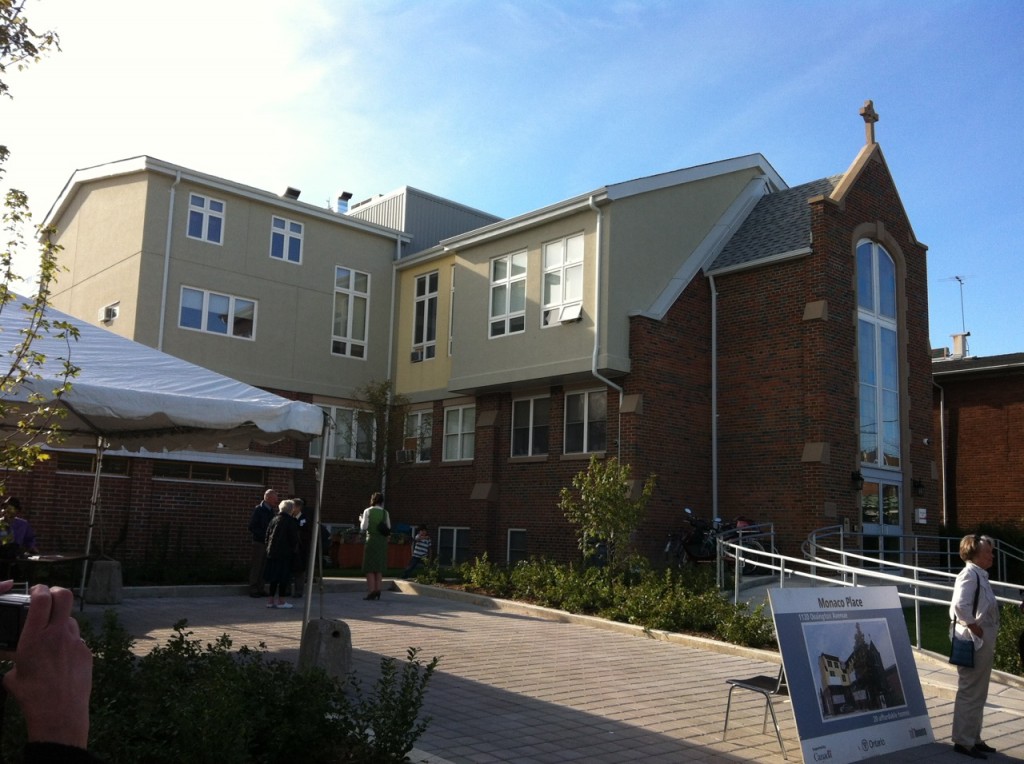
The transformed building, now named Monaco Place (Architect: Ellen Vera Allen Architect, Landscape Architect: Scott Torrance, Client: Saint Clair West Affordable Housing) . As you can see an inclined walkway for accessibility has replaced the large spruce tree. The permit was approved to “injure or destroy” this particular tree. Part of the permit process was to submit a landscape plan that called for additional tree plantings to make up for the loss of the Spruce tree. Some of the replacement planted trees can be seen to the left of the walkway, and in the foreground on the left. One may also note the large asphalt parking lot has been replaced with a much smaller lot and the surface has been replaced with semi permeable pavers, retaining some storm water. While not clear, the downspouts are no longer connected to the storm sewer but to rain barrels. The front lawn has also been replaced with shrubs & perennial plants further reducing runoff.
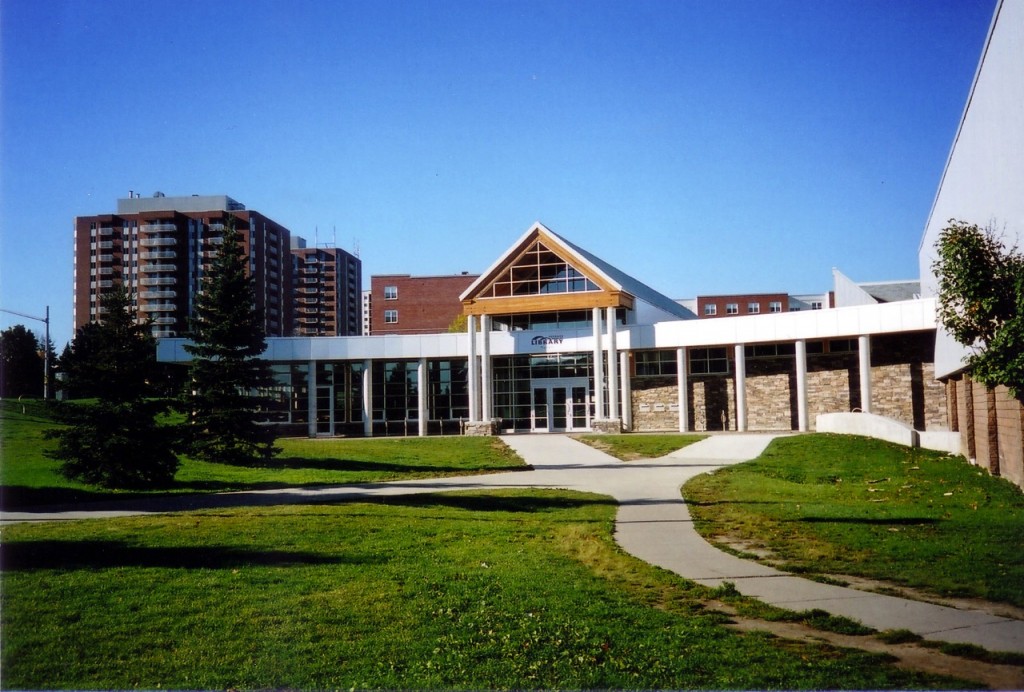
Another project, the Malvern Public Library (Architect: Phillip H Carter Architect, Landscape Architect: Scott Torrance, Client: Toronto Public Library ) this view looking west prior to the construction of the Youth Challenge Fund sponsored S.P.O.T. (Success Power Opportunity Teamwork) Centre Addition for young people in this priority neighbourhood in Toronto’s East End. The two spruce trees on the left, and the ash on the right were all subjects of a permit to “injure or destroy a tree” as was another Spruce tree whose shadow can be seen on the left foreground. These trees were proposed to be removed; in the case of the spruce trees for the new Malvern public square, and the ash to make way for the addition of the S.P.O.T. Centre.

The completed S.P.O.T. addition (the rounded colonnade to the right of the photo) and the new Malvern public square. As part of the application to remove the trees, a site plan agreement stipulated the one spruce tree be protected, and additional plantings were added to the project. On the right a Rain Garden was built with native species of birch and to retain storm water. The preserved spruce tree features dry stack limestone seating wall around the raised bed protecting the tree’s root system. (photo copyright David Smiley 2013)
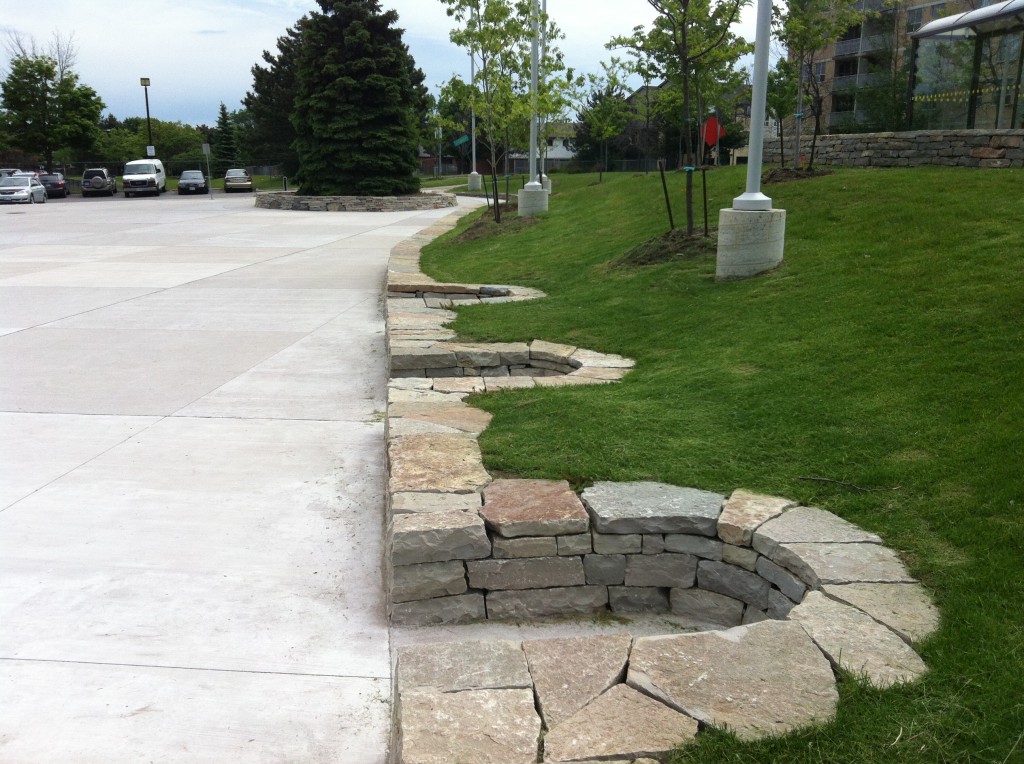
Looking to the east at the preserved spruce tree in the Malvern public square. In addition to the dry stack planter bed and retaining walls several examples of native species of oak & maple have been planted to assist in retaining the embankment seen on the right side of the photo.
In both of these examples, permits to “injure or destroy a tree” were accepted, but in one case of a tree, permission was denied. In both of these projects, the intent of the projects was respected, the administration burden was low, and the additional cost was minor. The client’s timetable was respected, and these projects proceeded without significant delay. I would argue that having a Private Tree Bylaw actually helped to focus attention on parts of the landscaping that otherwise may have been neglected, and the result was better and more handsome projects.
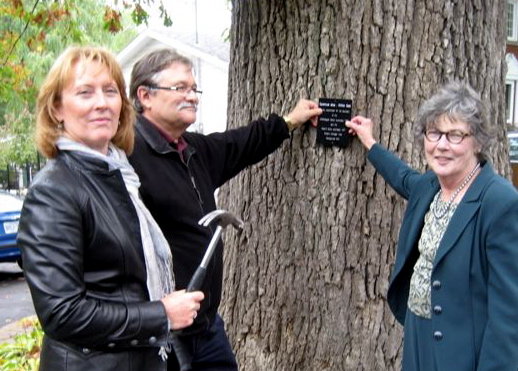
Burlington Horticultural Society President Joyce Vanderwoude, City Forester Rick Lipsitt and Jane Irwin with the plaque.
Two years ago, the Allview Oak, that is thought to be more than 300 years old was preserved as an historic tree. This was a significant achievement and to the many present, and those who read about it, it was a connection to those who first founded Burlington. How many other living connections to our past do we have that we can enjoy for so many reasons? It is a pity that the many city Councillors present did not use this as a moment to educate themselves on the importance and significance of trees to Burlington. Perhaps we can educate our next council enough to see the error of this one and correct it. Otherwise, this may be one of the last of these kinds of photographs for a long, long time.
The opportunity to do something before this council slips away for the summer isn’t lost yet: Councillor Meed Ward is understood to be preparing a motion that will breathe some life into the idea. Council committee chairs continually advise the public that committees just do the talking; that the final decision is made by Council.
Get those cards and letters in – and let us at least have staff preparing a draft bylaw that sets out the exemptions that would be part of the bylaw. No one wants to take away individual rights – the “tree huggers” just want to keep as many trees as possible.
Perhaps we can educate our next council enough to see the error of this one and correct it. Otherwise, this may be one of the last of these kinds of photographs for a long, long time.














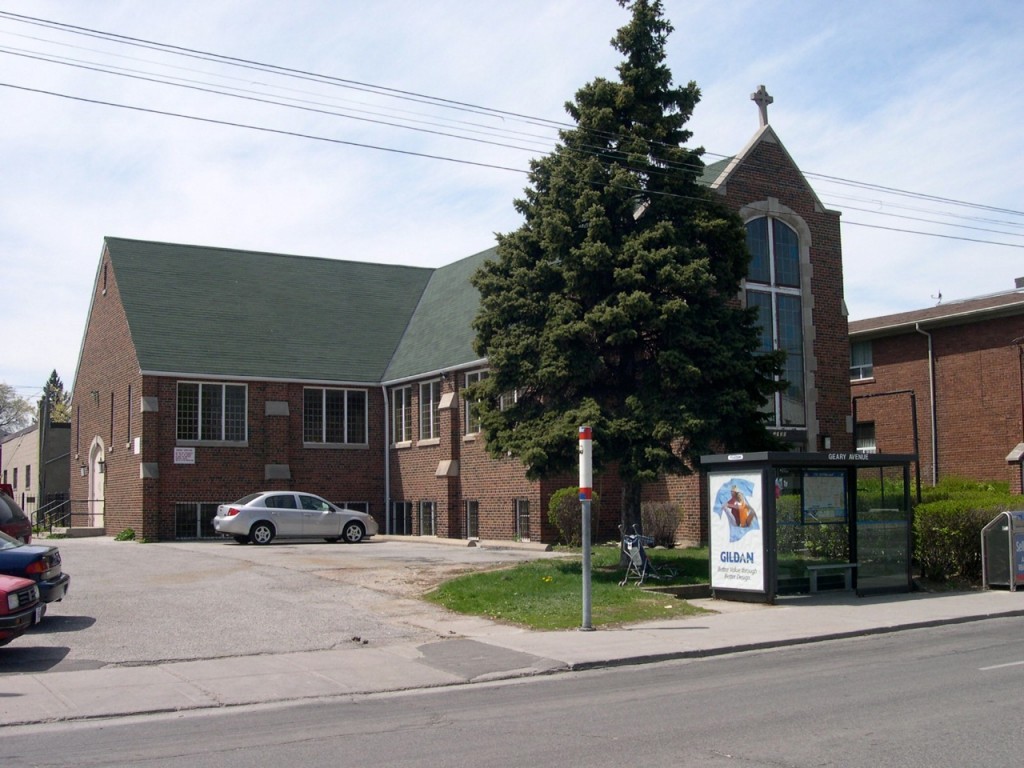







Great posting James. Very valuable input. We (BurlingtonGreen) hyperlinked it on our webpage here: https://www.burlingtongreen.org/latest-news/734-protecting-burlingtons-trees-5.html
Mature trees that are “properly placed around buildings” can protect a household from excessive exposure to the sun or wind. According to the U.S. Forest Service, such tree cover can conserve air conditioning use by 30 percent and heating use by 20 to 30 percent. The Service also states that “healthy, mature trees add an average of 10 percent to a property’s value.”